The Thinking into Growth Weekly Blog
Are you ready to transform your life and achieve unprecedented success? Welcome to the world of "Thinking Into Results" – a revolutionary program designed by Bob Proctor and the Proctor Gallagher Institute. This powerful system has helped thousands of individuals and businesses worldwide to break through their limitations, reshape their mindset, and achieve extraordinary results.
In this blog, we'll explore the core principles of Thinking Into Results, sharing insights from Bob Proctor's decades of experience in personal development. Whether you're an entrepreneur, a corporate professional, or simply someone looking to improve their life, you'll find valuable wisdom and practical strategies to help you reach your full potential.
Get ready to challenge your paradigms, expand your thinking, and create the life you've always dreamed of. Your journey to success starts here!

We Experience What We Focus On - Transforming Your Life Through Deliberate Focus
We Experience What We Focus On - Transforming Your Life Through Deliberate Focus
In today's fast-paced world, we easily get caught up in countless demands—our jobs, societal expectations, family responsibilities, and endless tasks. Most of us operate in a transaction-oriented mindset, reacting from outside-in. Something happens externally, and we immediately react without deeper consideration of whether this action truly serves our greater purpose.
This reactive approach often leads us to feel overwhelmed, stretched thin, and disconnected from what truly matters in our lives. Despite working harder and longer hours, many people find themselves no closer to their most important goals year after year. The fundamental problem isn't a lack of effort—it's a lack of focused attention on what truly matters.
The Secret to Success: Focus on What Truly Matters
You've likely heard that the secret to success isn't about doing more—it's about doing less of what doesn't matter and focusing more on what truly counts. While this may sound obvious, implementing it requires scrupulous prioritization of your time and energy.
This is challenging for several reasons:
It demands eliminating activities you actually enjoy
You must create a mental "firewall" against distractions
You need to ignore opinions that pull you off course
You must develop a strict priority system that protects your attention
When you have a clear, detailed goal, it becomes almost automatic to stay away from activities that don't align with your major objective. The clarity acts as a natural filter, helping you instantly recognize what deserves your attention and what doesn't.
Consider how often you've found yourself caught in the "busy trap"—feeling productive because you're constantly doing something, yet not making meaningful progress toward your most important goals. This happens because activity is often mistaken for achievement. True achievement comes from focused action aligned with clear intentions.
The Power of Prioritization
Prioritization isn't just about making lists—it's about making difficult choices. Each time you say "yes" to something, you're implicitly saying "no" to something else. The question becomes: are you saying "yes" to what truly matters?
Many successful people attribute their achievements not to what they did, but to what they deliberately chose not to do. Warren Buffett famously advised that the difference between successful people and very successful people is that very successful people say "no" to almost everything.
This isn't just about time management or productivity techniques. It's about transforming your relationship with attention itself. Your attention is perhaps your most valuable resource—where you direct it determines the quality of your experience and the nature of your results.
Creating Clarity Through a Major Goal
In our Thinking Into Results training, we emphasize getting extremely clear about what you really want. This means setting a major goal that you can visualize in vivid detail—seeing how it looks and feels when you achieve it. This clear, colorful, detailed mental picture creates the emotional connection that drives your decisiveness and momentum.
An effective major goal has several distinct characteristics:
It's something you have NEVER done before
You don't know exactly how to get there yet
You can see and feel with precision what success looks like
It must be YOUR goal, not someone else's expectation of you
When visualized properly, it evokes genuine emotion that fuels persistence
Before reaching a major goal—something you've never done before—you'll likely face setbacks and failures. To navigate this journey, you need a detailed, emotionally compelling vision that provides energy and resilience.
The process of clarifying your goal involves far more than just writing down what you want. It requires deep introspection and honest questioning: What do you truly desire if there were no limitations? What would make you jump out of bed excited each morning? What would give your life meaning and purpose beyond just existing?
Many people discover that their initial goals are actually influenced by external expectations—what their parents wanted, what society deems successful, or what their peers are pursuing. True clarity comes when you strip away these external influences and connect with your authentic desires.
Chiseling Out Your Vision
Think of the goal-setting process like a sculptor chiseling a masterpiece from a block of marble. Initially, you might only have a rough idea of what you want, but as you continue to refine and clarify, a detailed image emerges. This requires consistent effort and thoughtful revision.
Start by writing out your goal in detail. Then, each day, review and refine it. Ask yourself: "Is this really what I want? What would make this even more compelling? What details can I add to make this vision more vivid?"
As you work through this process, you'll notice the goal becoming more emotionally charged and personally meaningful. This emotional connection is crucial—it's what will pull you forward when challenges arise.
The Power of Your "Why"
When we meet to discuss your goals, I want you to describe exactly what you truly want—if you had no fear, no doubts, and no worries. What would you pursue?
Remember: If your reason isn't strong enough, you'll abandon your goal when obstacles appear. Life will test your commitment, throwing challenges in your path.
A powerful "why" might include:
Providing security for your family
Achieving personal freedom
Improving your health to be present for your children
Creating a meaningful legacy
Your "why" is the fuel that keeps you going when motivation fades—this is where most people go wrong.
The strength of your commitment is directly proportional to the strength of your reason why. When your reason transcends personal gain and connects to something greater—whether that's service to others, a legacy that outlives you, or expressing your unique gifts—your resilience in the face of challenges increases exponentially.
Many people focus exclusively on the "how" of achievement—the strategies, tactics, and steps. While these are important, they become largely irrelevant if your "why" isn't strong enough to sustain you through inevitable difficulties. When your commitment wavers, even the best strategy becomes ineffective.
Aligning Actions With Intentions
This is where many people falter. They claim to want financial freedom while spending recklessly. They talk about health goals while skipping workouts and choosing unhealthy foods. True commitment requires alignment between your stated goals and your daily actions.
Another common mistake is pursuing too many goals simultaneously. Focus on one major goal, and you'll find that smaller goals naturally align under it. By chasing only your primary objective with full commitment, other aspects of your life will fall into place.
The concept of alignment extends beyond just your actions—it includes your thoughts, beliefs, conversations, and the company you keep. Each of these elements either moves you toward your goal or away from it. The people you spend time with, for instance, have a profound impact on your thinking and, consequently, your results.
Jim Rohn famously said that you are the average of the five people you spend the most time with. This applies to your level of achievement, your mindset, and your expectations of what's possible. If you're serious about transforming your results, you may need to carefully evaluate whether your current social environment supports or hinders your aspirations.
Creating a Mental Firewall
In today's hyperconnected world, your attention is under constant assault. Notifications, news, social media, and the opinions of others all compete for your limited mental bandwidth. Without a deliberate strategy to protect your focus, these distractions will inevitably derail your progress.
Creating a mental firewall means establishing clear boundaries around what gets your attention. This might include:
Designated periods of deep, uninterrupted work
Limits on news and social media consumption
Scheduled times for checking email rather than constant availability
Clear parameters for which requests and opportunities deserve consideration
Many highly successful people attribute their achievements to the quality of their "no's" rather than their "yes's." Warren Buffett, Bill Gates, and others are known for jealously guarding their time and attention, understanding that these resources, once depleted, cannot be recovered.
Conscious Focus Creates Your Reality
"We don't experience life; we experience the life we focus on."
Every moment, we decide what deserves our attention, though most of us don't make these choices consciously. A clear major goal makes focusing much easier, providing a filter for all decisions.
You can consciously choose what to focus on—either what you already have or what's missing. Constantly focusing on what's missing will not help you progress toward your goal or grow as a person. Instead, direct your attention to your goal and the actions you're taking to move forward and develop personally.
This principle extends to how you interpret events and circumstances. Two people can experience the identical situation yet come away with completely different perceptions and emotional responses. The difference lies not in what happened, but in what aspect of the experience they chose to focus on.
Training yourself to direct your focus deliberately is perhaps the most valuable skill you can develop. It affects everything from your moment-to-moment happiness to your long-term achievements. Like any skill, it improves with practice and conscious attention.
The Journey of Transformation
Transforming your results isn't an overnight process—it's a journey of consistent focus and aligned action. Along this path, you'll encounter obstacles, setbacks, and moments of doubt. These challenges aren't signs that you should abandon your goal; they're opportunities to strengthen your commitment and refine your approach.
Many people give up just before breakthrough would have occurred, not realizing how close they were to success. Edison famously made thousands of unsuccessful attempts before inventing a working light bulb. When asked about his failures, he reportedly said he hadn't failed—he had successfully discovered thousands of ways that didn't work.
This perspective—focusing on progress rather than perfection—is characteristic of those who ultimately achieve their goals. They understand that setbacks are not failures but feedback, providing valuable information that brings them closer to success with each attempt.
Take the Next Step
A powerful way to accelerate this journey is to join our Thinking Into Results training program. We'll help you clarify your goals, strengthen your focus, and develop the mindset needed to transform your life through deliberate attention to what truly matters.
To learn more about how this program can help you achieve breakthrough results, book a call today at https://thinkingintogrowth.com/book
Best Regards,
Claes
WHAT SOME OF OUR CLIENTS SAY
Call +1 855-650-4523
Email: info@thinkingintogrowth.com
